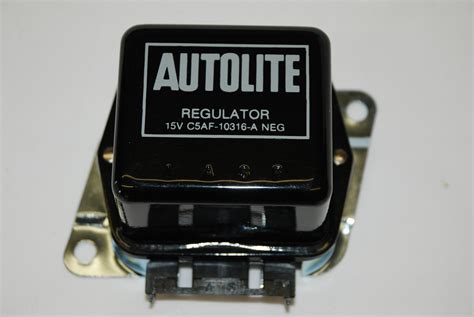What is a Voltage Regulator?
A voltage regulator is an electronic device that maintains a constant output voltage level despite fluctuations in the input voltage or load current. It acts as a buffer between the power source and the load, providing a stable and regulated power supply.
Key Functions of a Voltage Regulator
- Voltage Stabilization
- Current Limiting
- Noise Reduction
- Transient Response
Types of Voltage Regulators
There are three main types of voltage regulators:
1. Linear Voltage Regulators
Linear voltage regulators work by continuously adjusting the voltage drop across a pass element, such as a transistor, to maintain a constant output voltage. They are simple, inexpensive, and provide low noise output, making them suitable for low-power applications.
Advantages of Linear Voltage Regulators
- Simple design
- Low noise output
- Inexpensive
Disadvantages of Linear Voltage Regulators
- Low efficiency
- Limited output current
- Heat generation
2. Switching Voltage Regulators
Switching voltage regulators use Pulse-Width Modulation (PWM) to control the power delivered to the load. They rapidly switch between on and off states, allowing for higher efficiency and greater output current compared to linear regulators.
Advantages of Switching Voltage Regulators
- High efficiency
- High output current
- Compact size
Disadvantages of Switching Voltage Regulators
- Higher noise output
- Complex design
- Electromagnetic interference (EMI)
3. Shunt Voltage Regulators
Shunt voltage regulators work by diverting excess current through a parallel shunt element, such as a Zener Diode, to maintain a constant voltage across the load. They are simple and inexpensive but have limited current handling capabilities.
Advantages of Shunt Voltage Regulators
- Simple design
- Inexpensive
- Fast response time
Disadvantages of Shunt Voltage Regulators
- Limited current handling
- Low efficiency
- Heat generation
High Current Voltage Regulator Applications
High current voltage regulators find applications in various fields, including:
- Automotive Electronics
- Industrial Control Systems
- Telecommunications
- Consumer Electronics
- Aerospace and Defense

Designing High Current Voltage Regulators
When designing high current voltage regulators, several key factors must be considered:
1. Current Rating
The current rating of the voltage regulator must be sufficient to handle the maximum load current of the system. Overloading the regulator can lead to overheating, reduced performance, and even failure.
2. Thermal Management
High current voltage regulators generate significant heat due to the large amount of power dissipation. Proper thermal management, including heat sinks, thermal pads, and adequate ventilation, is crucial to ensure reliable operation and prevent thermal shutdown.
3. Input and Output Capacitors
Input and output capacitors play a vital role in reducing ripple, improving transient response, and ensuring stability. The choice of capacitor type, value, and placement is critical for optimal performance.
4. PCB Layout
A well-designed PCB layout is essential for minimizing parasitic inductance, reducing noise, and improving thermal dissipation. Proper grounding, component placement, and trace routing are key considerations.
Voltage Regulator Protection Features
To ensure reliable and safe operation, high current voltage regulators often incorporate various protection features:
- Over-Current Protection (OCP)
- Over-Temperature Protection (OTP)
- Under-Voltage Lockout (UVLO)
- Reverse Polarity Protection
These protection features safeguard the regulator and the connected load from damage due to abnormal operating conditions.
Voltage Regulator Performance Parameters
When selecting a high current voltage regulator, several key performance parameters must be considered:
| Parameter | Description |
|---|---|
| Line Regulation | The ability to maintain a constant output voltage despite changes in the input voltage |
| Load Regulation | The ability to maintain a constant output voltage despite changes in the load current |
| Efficiency | The ratio of output power to input power, expressed as a percentage |
| Dropout Voltage | The minimum input-to-output voltage difference required for the regulator to maintain regulation |
| Quiescent Current | The current consumed by the regulator when no load is connected |
Understanding and optimizing these parameters is crucial for achieving the desired performance and efficiency in high current voltage regulator applications.
Frequently Asked Questions (FAQ)
-
What is the difference between a linear and a switching voltage regulator?
Linear voltage regulators continuously adjust the voltage drop across a pass element to maintain a constant output voltage, while switching regulators use pulse-width modulation (PWM) to control the power delivered to the load. Switching regulators offer higher efficiency and output current but generate more noise compared to linear regulators. -
How do I select the appropriate voltage regulator for my application?
When selecting a voltage regulator, consider factors such as the required output voltage, maximum load current, efficiency, noise requirements, and thermal management. Consult the regulator’s datasheet and application notes to ensure it meets your specific needs. -
What is the purpose of input and output capacitors in a voltage regulator circuit?
Input capacitors help to reduce input voltage ripple and provide a stable supply to the regulator, while output capacitors reduce output voltage ripple, improve transient response, and ensure stability. The choice of capacitor type, value, and placement is crucial for optimal performance. -
How can I improve the thermal performance of a high current voltage regulator?
To improve thermal performance, use adequate heat sinks, thermal pads, and ensure proper ventilation. Optimize the PCB layout for better heat dissipation, and consider using a fan for active cooling in high-power applications. -
What protection features are commonly found in high current voltage regulators?
Common protection features in high current voltage regulators include over-current protection (OCP), over-temperature protection (OTP), under-voltage lockout (UVLO), and reverse polarity protection. These features safeguard the regulator and the connected load from damage due to abnormal operating conditions.
Conclusion
High current voltage regulators play a crucial role in providing stable and reliable power supply to various electronic devices. Understanding the working principles, types, applications, and design considerations of voltage regulators is essential for successful implementation in modern electronic systems.
By carefully selecting the appropriate regulator, optimizing the design, and incorporating necessary protection features, engineers can ensure efficient and robust power management solutions for a wide range of applications.






Leave a Reply